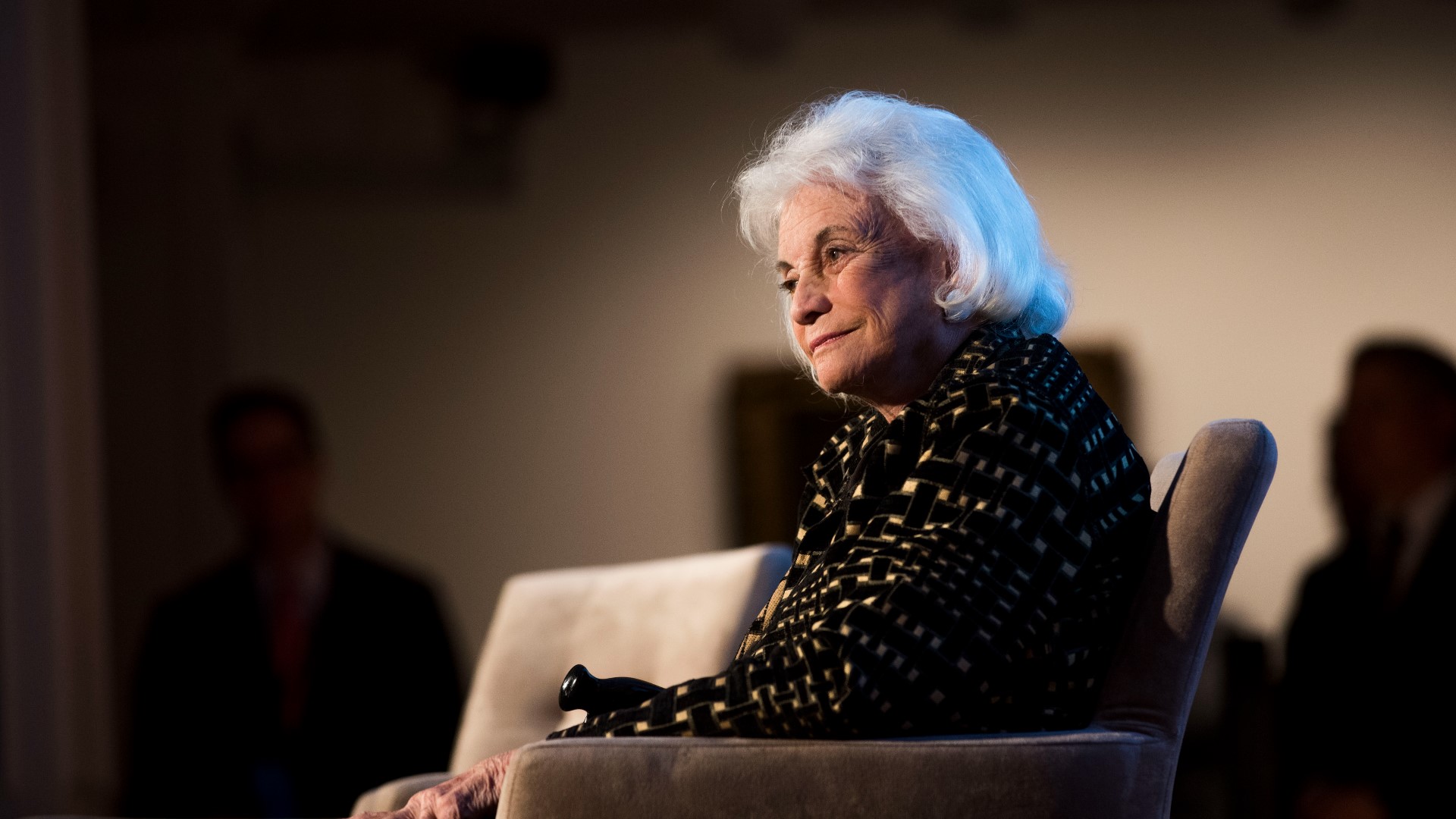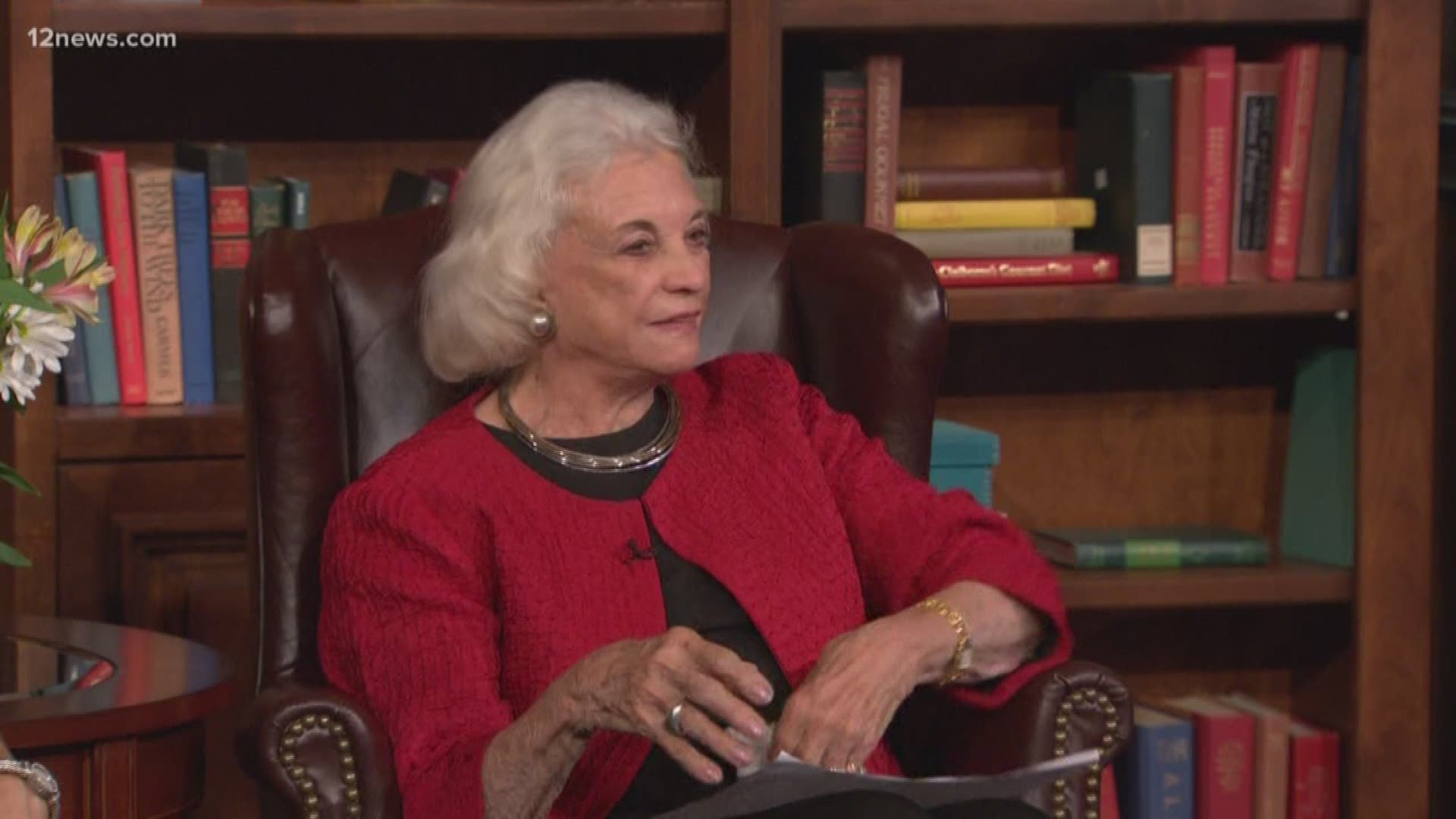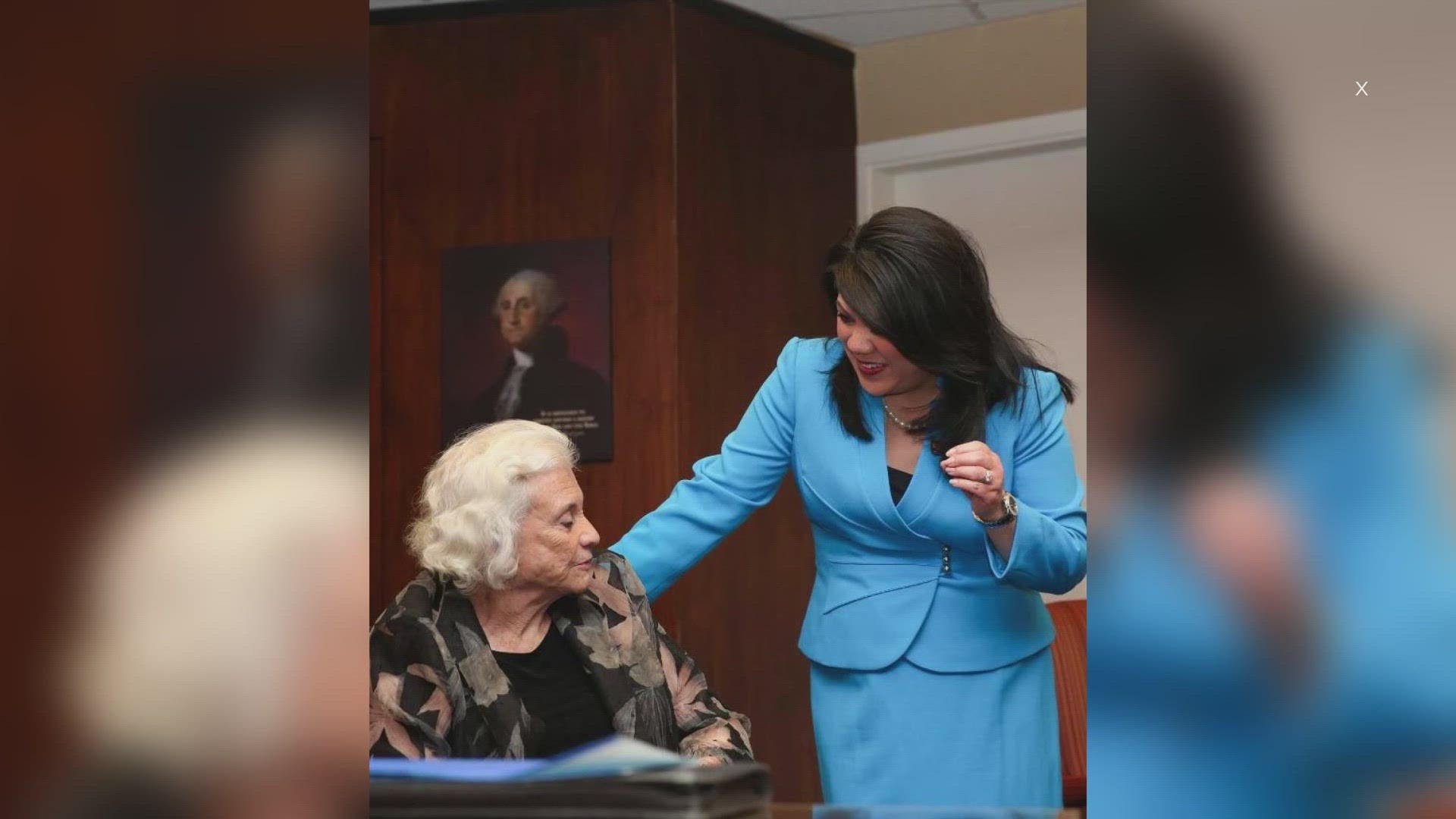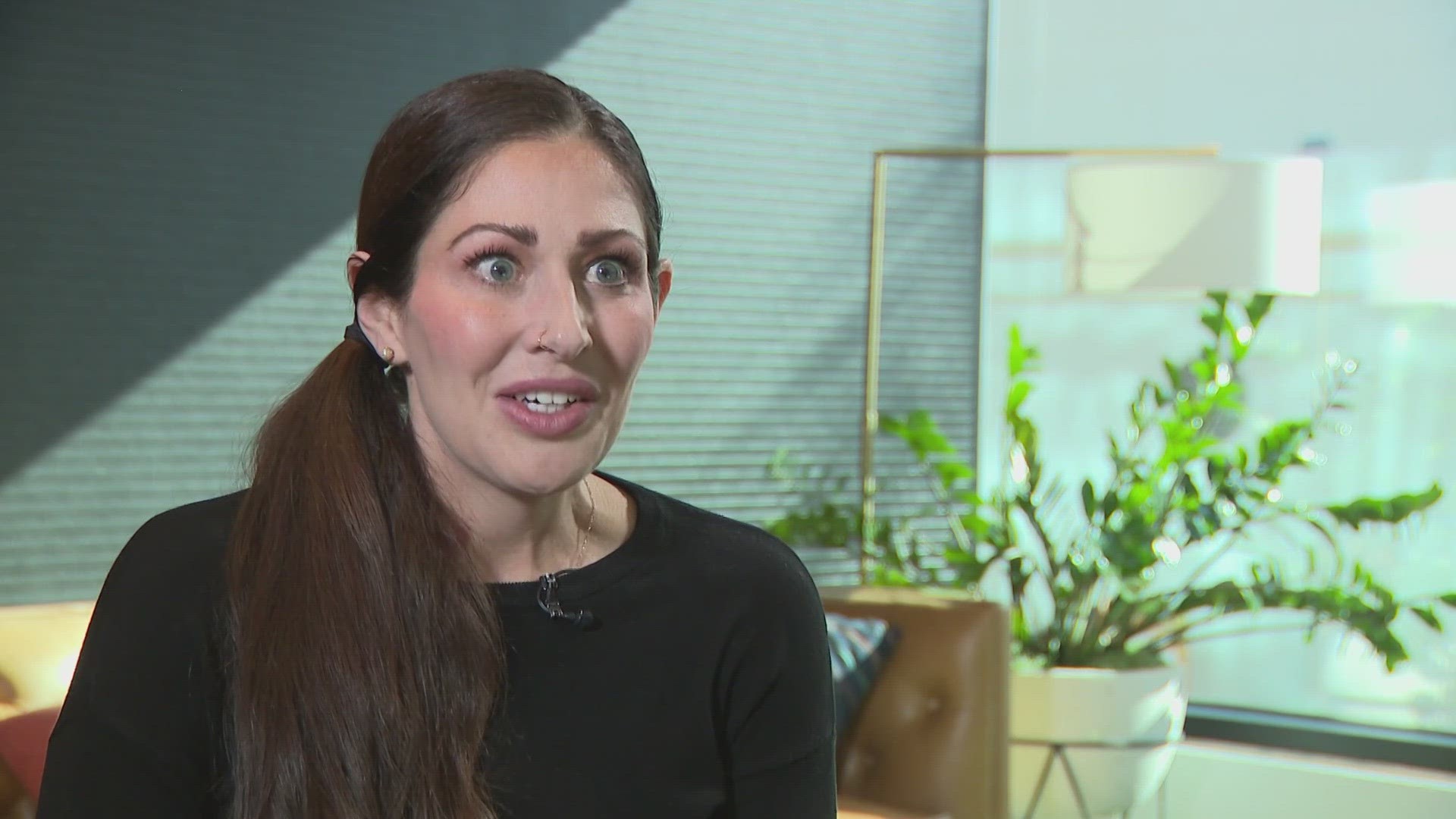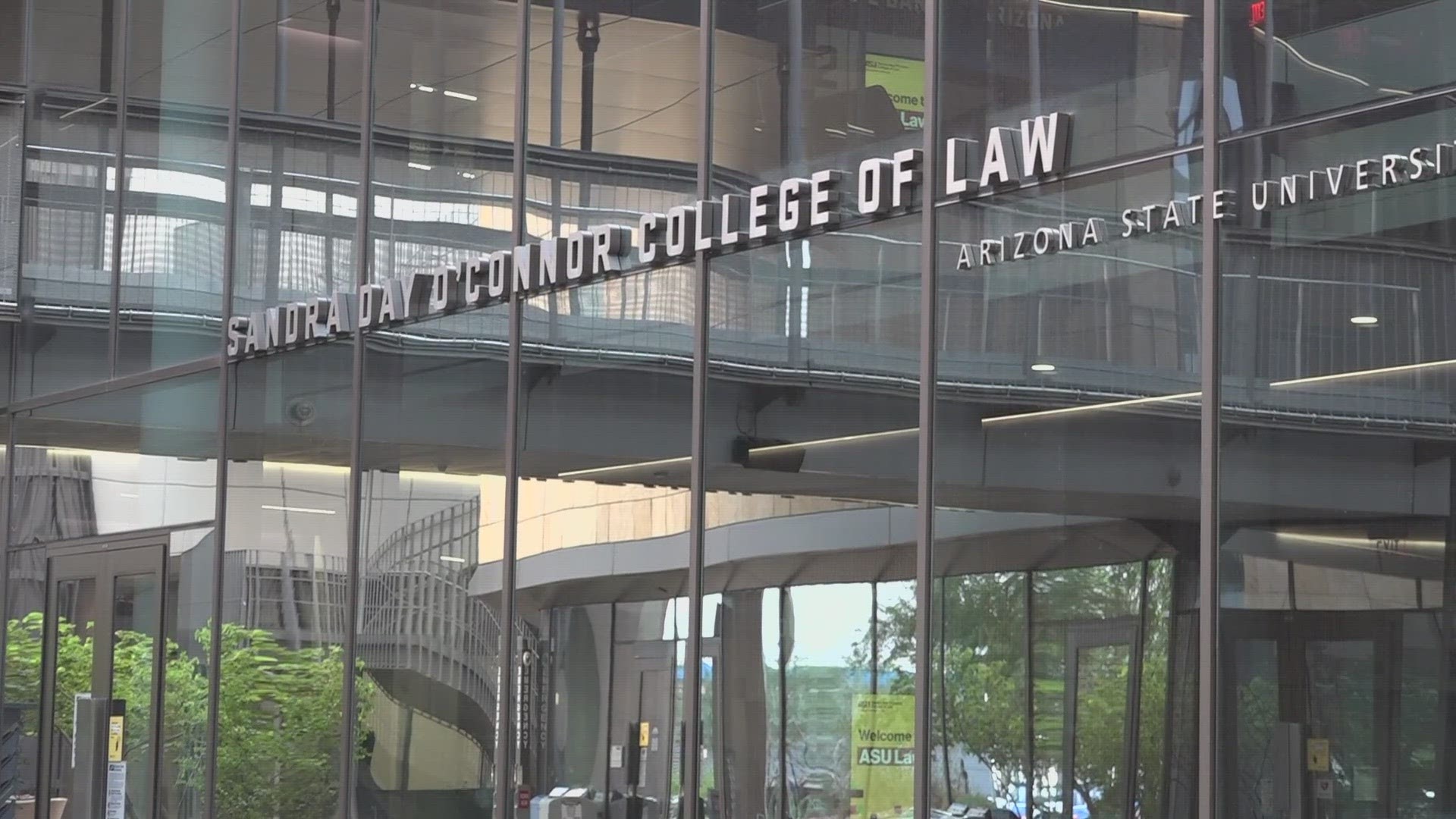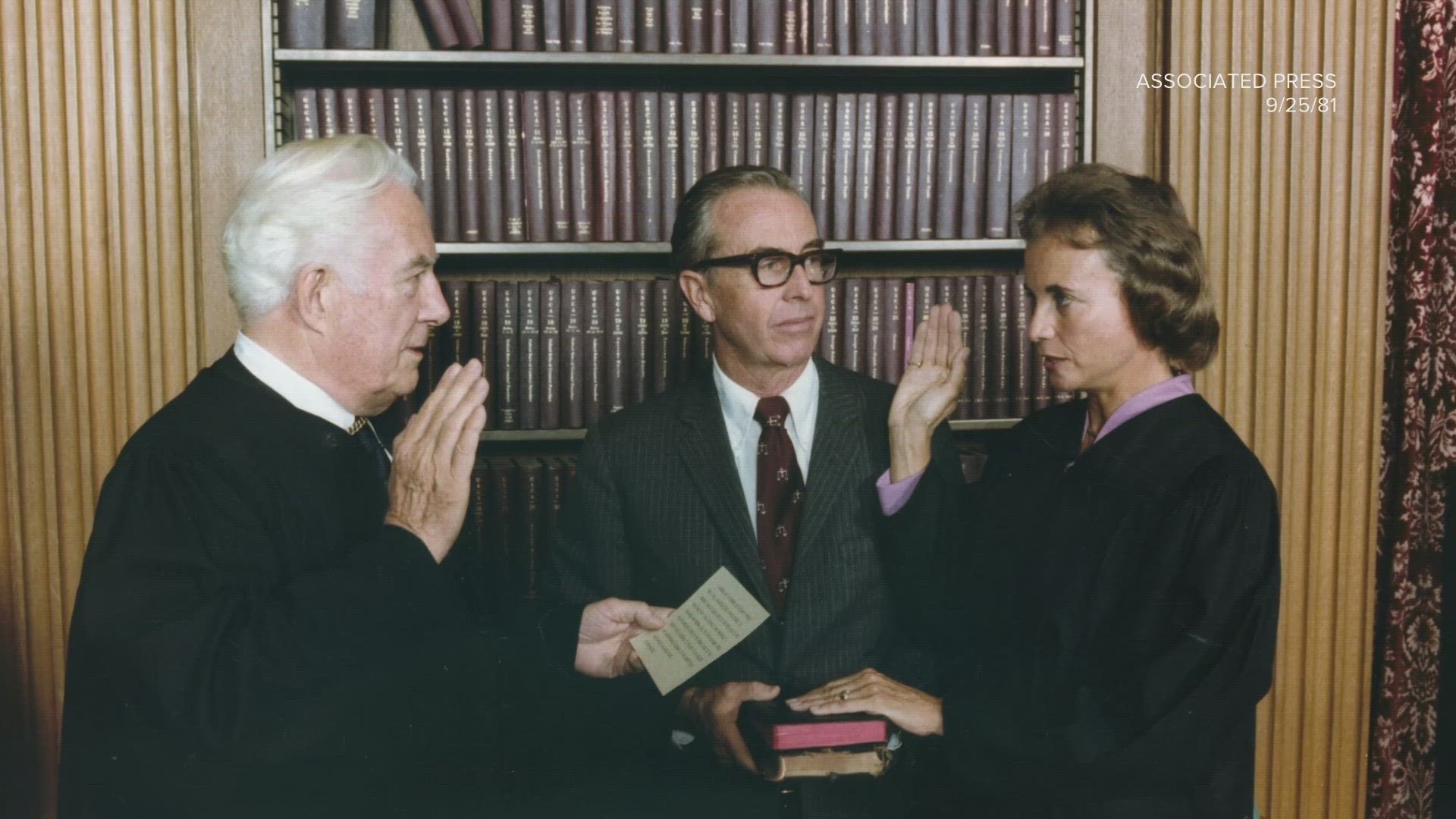PHOENIX — The girl who grew up hunting rabbits in eastern Arizona and became the first woman on the U.S. Supreme Court has died at the age of 93.
Sandra Day O’Connor passed away in Phoenix from complications of Alzheimer’s Disease. Justice O’Connor was a trailblazer in Arizona politics before joining the nation’s highest court, and in her later years served as a world ambassador for the U.S. judicial system.
“The corny, classic line she always used to say was that her tombstone should say ‘here lies a good judge’,” said Scott O’Connor, one of Sandra Day O’Connor’s three sons.
“She wants to be remembered for being a fair judge who ensured every case was heard based on its merits and not partisan politics.”
Growing up 'grounded' on the ranch
Born in El Paso Texas in 1930, Sandra Day O’Connor grew up traveling back and forth between El Paso and her family’s cattle ranch in far eastern Arizona. O’Connor developed an independent streak at an early age, learning to hunt jackrabbits for food with a 22-caliber rifle while avoiding hazards of the desert.
“You really didn’t want to fall off your horse because you could land on a cactus or an ant den, so it helped to stay on board,” O’Connor said during a 2003 PBS interview.
She believed in the importance of physical labor and made sure her sons spent summers on the ranch learning to buck hay, patch tires and repair windmills, said Scott during a 2019 interview with 12 News.
“She thought that was really important to education to ‘get grounded,’ and that you shouldn’t ever look down on people who do manual work,” Scott O’Connor said.
A law degree at 21 years old
A stellar student, Sandra Day O’Connor graduated from high school after three years and entered Stanford University at age 16. She graduated from Stanford Law School at 21 years old.
After leaving law school in 1952, the doors of opportunity were closed to Sandra Day O’Connor compared to her male counterparts.
“I must say, I must have been naïve when I was in law school because I never thought it would be difficult to get a job when I got out. It never occurred to me I wouldn’t get one,” she told PBS.
While living in California, she agreed to work at the San Mateo County District Attorney’s office for free to gain experience.
“I said, ‘well I can work for a while for nothing if you’ll let me sit next to the secretary in her office.’ And that was the deal we struck,” Sandra Day O’Connor said.
Five marriage proposals
While at Stanford, Sandra Day O’Connor received five marriage proposals from different suitors, including William Rehnquist, whom she dated for a time. Rehnquist would later become a Justice of the U.S. Supreme Court as well.
A photo from Sandra Day O’Connor’s law school archives shows her as the only female student surrounded by 29 men. In 1952 she married a fellow law review editor at Stanford, John Jay O’Connor.
“Dad won the lottery,” said Scott O’Connor.
John was a prominent attorney in Phoenix and a life partner to Sandra.
Scott O’Connor recounts how when his mother served in the Arizona State Senate in the 1970’s the couple would spend nights writing drafts for proposed legislation and discuss ideas at the dinner table.
“They went through yellow pads like nobody’s business,” said Scott O’Connor. “They would edit each other’s work and then she would go to the capitol and introduce legislation.”
A trailblazer in Arizona politics and law
During the 1960s Sandra Day O’Connor got her first taste of politics. She volunteered for Republican causes and served on Barry Goldwater’s presidential campaign. In 1965 she landed a prestigious legal position as assistant Attorney General of Arizona.
She was assigned to the state mental hospital as an in-house lawyer.
“That’s when she learned how awful mental health care was in Arizona at the time,” Scott O’Connor said.
In 1970, Sandra Day O’Connor won a seat on the Arizona State Senate, where she became the first woman in the country to serve as a legislative majority leader. Colleagues described her as a respected, even-tempered negotiator. She alluded to the importance of civic discourse during a 12News town hall with young students.
“Even though you feel strongly about it, the discussion doesn’t have to get angry and hostile, does it?” Sandra Day O’Connor said. “But it’s so hard sometimes… and you think the other side is being kind of mean. You are tempted to say something mean back, aren’t you?”
The first woman on the U.S. Supreme Court
In 1974 Sandra Day O’Connor returned to the courtroom as a Maricopa Superior Court Judge and then as a member of the Arizona Court of Appeals. Then in 1981 President Ronald Reagan nominated Sandra Day O’Connor to the U.S. Supreme Court, calling her “a woman for all seasons.”
Reagan’s appointment amounted to her being “struck by political lightning,” in Scott O’Connor’s words.
“She was chosen as a woman on her merits, a woman with just good common sense. It made me really patriotic at the time. There have been years since where my patriotism has been tested by various characters on the political scene. But I hold on to that little nugget about how quintessentially American that was,” Scott O’Connor said.
Sandra Day O’Connor’s confirmation was the first to be televised, and it focused largely on whether she would overturn Roe Vs. Wade. She was careful with her words.
“I am opposed to the use of abortion as a form of birth control or other means. The subject of abortion is a valid one in my view for legislative action subject to any constitutional restraints or limitations,” Sandra Day O’Connor was quoted as saying during the hearing.
Her nomination was celebrated across the country and she received weekly bags of mail.
“I heard from women who would say things like this, ‘I cannot describe what delight I felt seeing the headlines … feeling overwhelmingly euphoric and proud’,” Sandra Day O’Connor told PBS.
A swing vote on the court and death threats
Over the next 24 years, the moderate Justice O’Connor became a crucial swing vote on crucial cases.
She was applauded by progressives for decisions relating to civil rights, environmental protections and a 1992 case upholding Roe Vs. Wade.
Conservatives counted victories when she cast deciding votes in cases allowing school vouchers, one supporting California’s three strikes law, and the 2000 ruling to end the recount of Bush vs. Gore, solidifying George W. Bush’s election victory.
The case that caused more death threats against her than any other issue, Scott O’Connor said, was a footnote she wrote on an opinion involving whether capital punishment should be applied to a juvenile with developmental disabilities. In forming her opinion, Justice O’Connor researched what other advanced Western democracies did in the same situation.
“Whack jobs in the U.S. with their computers posted death threats because she dared do something like that. It wasn’t American enough,” Scott O’Connor said. “But that’s just who she was. She was a ranch girl. She applied common sense.”
Alzheimer’s disease becomes a diagnosis and a cause
Sandra Day O’Connor stepped down from the court in 2005, in large part to support John who had been diagnosed with Alzheimer’s disease.
Justice O’Connor joined an advisory group in Phoenix with the Banner Alzheimer’s Institute and attended regular meetings. She testified before Congress about the importance of federal funding for Alzheimer’s research and became the honorary chair of the Alzheimers Drug Discovery Foundation, which provides grants to causes not backed by big pharmaceutical companies.
John O’Connor passed away from Alzheimer’s Disease in 2009 at the age of 79. Ten years later, Sandra Day O’Connor announced she had been diagnosed with the beginning stages of Alzheimer’s Disease.
“She went from being an advisor to a patient,” Scott O’Connor said.
'We have a problem with civil discourse'
After retirement, Justice O’Connor used her prestige to speak about the importance of civic activism and cooperation. She pioneered the education program, ICivics.Org, a website for students that uses interactive video gaming to create a civics education platform. Aimed primarily towards middle schoolers, it became hugely successful. More than 5 million children a year use the program.
“We’re all astonished at the success of I-Civics. That’s really a legacy that mom is personally most proud of today,” said Scott O’Connor in 2019.
The nonprofit, nonpartisan O’Connor Institute works to build consensus and form collaborations on vital public issues facing the country. When Justice O’Connor spoke at a 12News town hall, she urged young people to think twice about the words they use while debating issues.
“We have a problem with civil discourse today,” Sandra Day O’Connor said.
A judicial ambassador to the States and the world
Sandra Day O’Connor fiercely believed in the importance of an independent judiciary. During her life, she worked hard to convince states to adopt a merit selection system of judges as opposed to electing judges.
“She believed judges shouldn’t be asking money from people who would later appear in their courtroom as a party to a case,” Scott O’Connor said.
Most counties in Arizona operate on a merit system.
“As a result, Arizona’s judges have much higher quality judges than under past systems where people ran for office without any other particular qualification than being able to raise money for a particular contest,” Scott O’Connor said.
Sandra Day O’Connor was especially convinced of the necessity of an independent judiciary when she traveled internationally.
Justice O’Connor was in high demand by the State Department, which fielded calls from other countries. Their governments wanted Justice O’Connor to speak to their country’s elected officials about the judicial system and how it works.
“She visited supreme courts and heads of state and legislative bodies all over the world. She was the most in-demand judge of that nature,” Scott O’Connor said.
Early in her tenure on the U.S. Supreme Court, she volunteered as a board member of the Central and Eastern European Legal Initiative. Its purpose was to help governments write new legal systems after the collapse of the Soviet Union. Sandra Day O’Connor helped recruit American lawyers as volunteers to instruct attorneys overseas.
“When she came back (from these trips), I would ask her what was most challenging. She said number one, nobody in those countries believed a judge could be independent. Not possible. Because in the old system, they weren’t paid well and did whatever bidding there was in the form of bribery,” Scott O’Connor said. “For her to see that all over the world, she would come back here and explain here ‘you don’t realize how lucky we are and how important it is. We cannot take it for granted. We have to protect the independence of judges and keep them from being susceptible to bribes.”
A lasting legacy and a personal touch
Sandra Day O’Connor’s legacy is seen across Arizona. A high school in Glendale, the law school at ASU and the federal courthouse in downtown Phoenix all bear her name.
But her son said it was Sandra’s personal touch with those she met that will resonate. He recalled her former U.S. Supreme Court clerks, of which there are more than a hundred, traveling to Phoenix to visit her during her final years.
“A final pilgrimage,” Scott O’Connor described it. “Those clerks were like an extended family to her. When she was talking to you, you were the only person in the room. She would always be looking at you straight in the eye and be genuinely interested in you.”
12News on YouTube
Catch up on the latest news and stories on our 12News YouTube playlist here.

